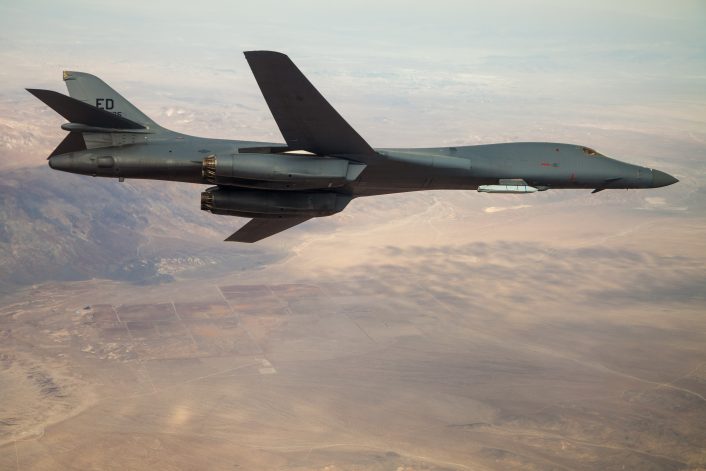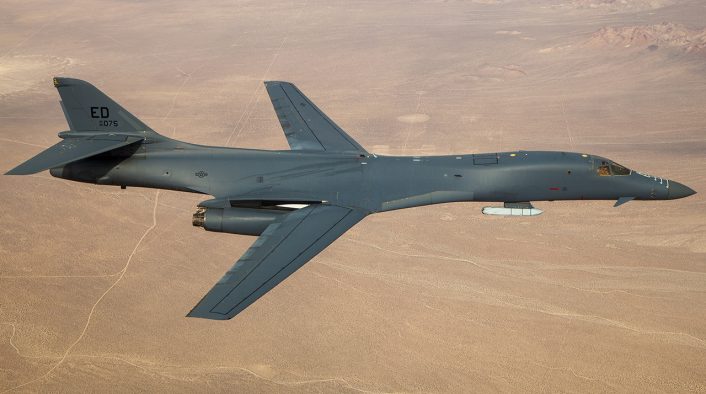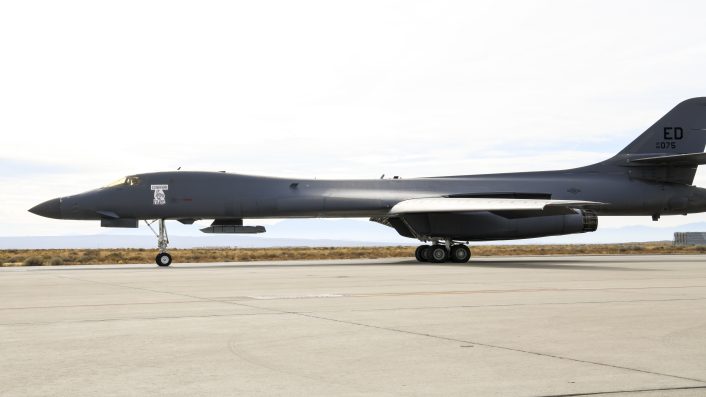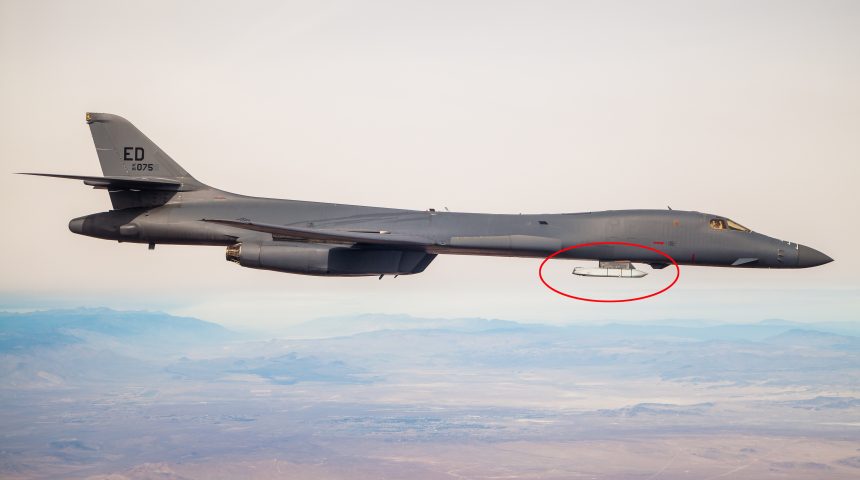A B-1B Lancer flew for the first time with an inert JASSM (Joint Air-to-Surface Standoff Missile) under an external pylon during a demo at Edwards AFB.
On Nov. 20, 2020, a B-1B Lancer assigned to the 412th Test Wing’s 419th Flight Test Squadron, Global Power Combined Test Force, flew a mission carrying an inert JASSM under an external pylon for the first time.
The external captive carry flight took place in the skies over Edwards Air Force Base, California, was part of a demo that may pave the way to make the B-1B, aka “Da BONE”, to carry hypersonic weapons externally. The JASSM was mounted on the forward right hard point, usually used to carry the SNIPER ATP (Advanced Targeting Pod).
The B-1 can carry 24 JASSM missiles in its internal weapons bays.
The AGM-158 JASSM (with a range in excess of 200 nautical miles) and its extended-range version, the AGM-158B Joint Air-to-Surface Standoff Missile – Extended Range (JASSM-ER) with a standoff distance of over 500 nautical miles, are GPS-guided radar-evading cruise missiles with 2,250-lbs penetrator/blast fragmentation warhead. The JASSM cruise missile employs precision routing and guidance in adverse weather, day or night, using an infrared seeker in addition to the anti-jam GPS to find and destroy high-value, well-defended targets.

The B-1 can also carry internally 24 AGM-158C LRASM, the new low-observable anti-ship cruise missile based on the JASSM-ER and developed by DARPA (Defense Advanced Research Projects Agency) for the U.S. Air Force and U.S. Navy. The latter has been carried during a Bomber Task Force Europe mission over Eastern Europe, by two B-1s of the 28th Bomb Wing, from Ellsworth AFB, that also saw the two bombers being intercepted by Russian Su-27s over the Black Sea.
According to the U.S. Air Force, the captive carry flight was “the culmination of the numerous ground tests that began with last year’s expanded carriage demonstration that included a modified internal bomb bay, which featured a moveable bulkhead. The demonstration showcased a configuration of the B-1 that would allow the aircraft to carry larger-sized weapons both internally and externally.”
“Adapting a small number of our healthiest B-1s to carry hypersonic weapons is vital to bridge between the bomber force we have today, to the force of tomorrow,” said Gen. Tim Ray, Air Force Global Strike Command commander in a public release. “This is a major step forward in our global precision fires capability and it is important we pursue these technologies to remain ahead of our competitors. My goal is to have a limited number of B-1s modified to become the roving linebacker of the western Pacific and the North Atlantic.”

The external hard points were initially thought for the B-1’s nuclear strike mission. However, the bomber mission was reviewed and the type was converted to conventional only weapons with a shift decided in 1994 and a physical conversion that took place between 2007 and 2011, with the Strategic Arms Reduction Treaty (START).
The current expanded carriage demo will make the external hard points and moveable bulkhead available again for delivering conventional weapons so that the B-1 will remain complaint with the New START Treaty. The proposed increase in capacity of means that two B-1s will be able to carry as many weapons as three bombers can carry now.
The next step of the testing, is an external weapons release, that will have to validate that the JASSM and B-1 are communicating correctly.

Whereas the U.S. Air Force continues to work to maintain the the B-1B as a “multi-mission weapon system”, potentially paving the way for the integration of future weapons on the bomber (that has been particularly busy lately all around the world), the service says the captive carry demonstration does not affect the request to retire 17 B-1B Lancers in 2021.








